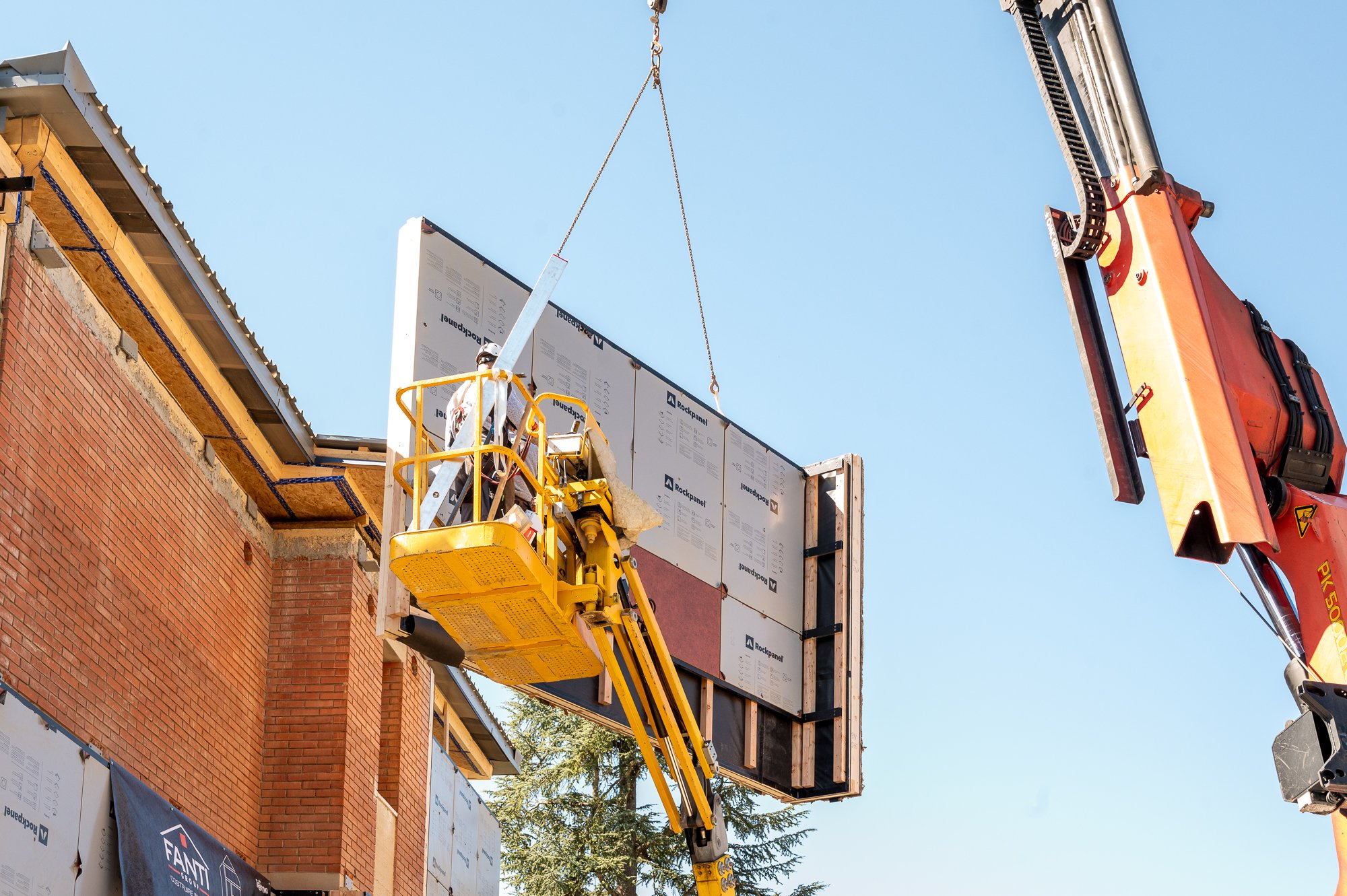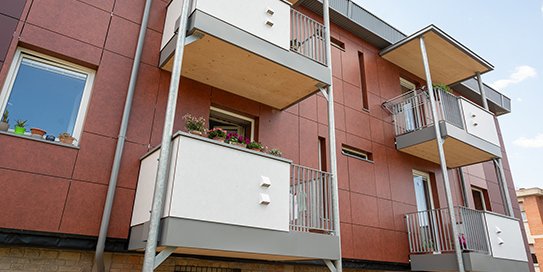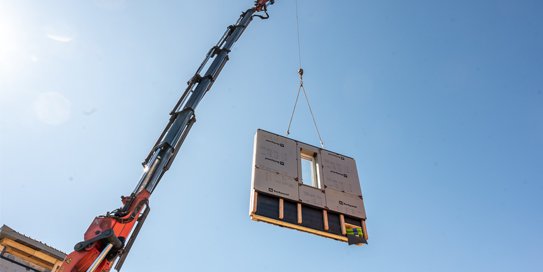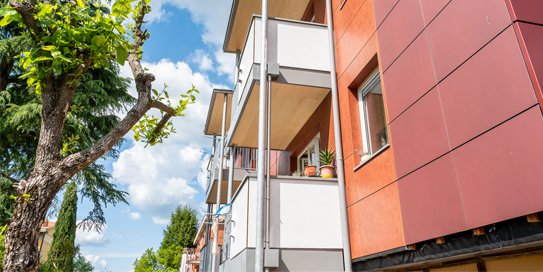What is Industrialised Deep Renovation?
Industrialised Deep Renovation (IDR) is a new approach to upgrade existing buildings, combining the principles of deep renovation, which aims for substantial energy performance improvements, with industrialised construction methods, characterized by digital-aided offsite manufacturing of building components. This innovative approach offers a pathway to achieving the European Union's ambitious climate neutrality goals addressing the challenges of a rapidly aging building stock.
What is deep renovation?
Deep renovation goes beyond conventional “light” renovation practices, targeting significant reductions in energy consumption and greenhouse gas emissions, while assuring the highest indoor comfort conditions.
According to the EPBD, deep renovation is a comprehensive process that focuses on essential building elements such as:
- Wall insulation: enhancing the thermal resistance of exterior walls to minimize heat loss.
- Roof insulation: improving the insulation of the roof to reduce heat transfer.
- Bottom (on-air or on-ground) floor insulation: insulating the floor to prevent heat loss to the ground.
- Replacement of external windows and doors: installing high-performance windows and doors to minimize air leakage and improve insulation.
- Ventilation and heating/cooling systems: upgrading to energy-efficient heating, ventilation, and air conditioning (HVAC) systems.
- Treatment of thermal bridges: addressing points in the building envelope where heat transfer is increased, reducing energy loss.
To quantify deep renovation, the EU commonly sets the energy reductions to 75% or more, compared to the status of the existing building. The primary energy consumption of the building after renovation is used as a metric, aiming for values below 60 kWh/m2/yr.
What is “industrialised” deep renovation?
The industrialised renovation involves the manufacturing of the building systems used for the retrofit in a controlled factory environment. These prefabricated elements are then transported to the renovation site for installation.
This involves :
- Design for Manufacture and Assembly (DfMA): designing buildings specifically for off-site production and efficient on-site assembly.
- Prefabrication: manufacturing building components like walls, roof panels, and complete modules off-site.
How does IDR work?
Retrofitting a building with prefabricated components usually follow these steps:
Assessment and design
A thorough assessment of the existing building needs, owner wish list and constraints is conducted to identify energy efficiency opportunities and develop a detailed renovation plan. This plan considers the building's specific characteristics and incorporates DfMA principles to optimize off-site production.
Off-Site production
Prefabricated components are manufactured in a factory setting, ensuring high quality control and precision. These components can range from simple wall panels to complex modules that include insulation, windows, finishes, and even pre-installed building services. Have a look at some of the prefabricated components already available.
On-Site assembly
The prefabricated components are transported to the building site and assembled quickly and efficiently. This minimizes disruption to tenants and reduces the overall construction time.
See the buildings renovated with prefabricated retrofit solutions.
What are the benefits of deep renovation?
There are immediate and long-term advantages during the renovation both for tenants and for building owners.
With this industrialised approach, costs can be shared among solution providers, contractors, and property developers, making projects more efficient and cost-effective.
Lastly, faster renovation rates and higher quality retrofit impact positively on the environment and society.





